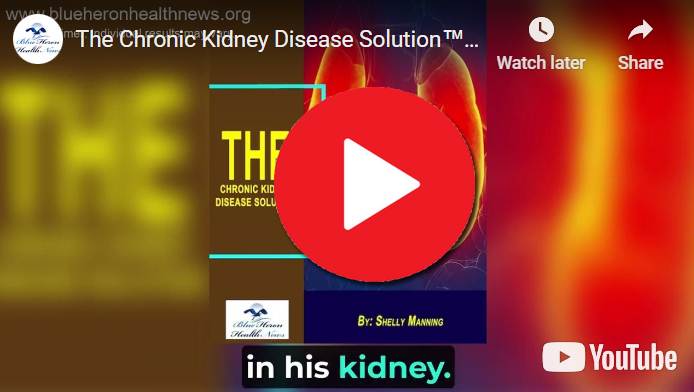
The Chronic Kidney Disease Solution™ By Shelly Manning It is an eBook that includes the most popular methods to care and manage kidney diseases by following the information provided in it. This easily readable eBook covers up various important topics like what is chronic kidney disease, how it is caused, how it can be diagnosed, tissue damages caused by chronic inflammation, how your condition is affected by gut biome, choices for powerful lifestyle and chronic kidney disease with natural tools etc.
What role does dialysis play in CKD treatment?
Dialysis plays a critical role in the treatment of advanced chronic kidney disease (CKD), particularly when the kidneys can no longer adequately perform their essential functions. Dialysis helps to remove waste products, excess fluids, and electrolytes from the blood, which the kidneys are no longer able to do efficiently. Here’s a detailed overview of the role of dialysis in CKD treatment:
When is Dialysis Needed?
Dialysis is typically initiated when CKD progresses to end-stage renal disease (ESRD), or stage 5 CKD, where the glomerular filtration rate (GFR) falls below 15 mL/min/1.73 m² and the kidneys can no longer maintain a balance of fluids, electrolytes, and waste products in the body. Dialysis may also be necessary in cases of acute kidney injury (AKI) if kidney function does not recover.
Types of Dialysis:
- Hemodialysis (HD):
- Procedure: Blood is filtered through a dialyzer (artificial kidney) to remove waste products and excess fluids. Blood is then returned to the body.
- Frequency: Typically performed three times a week, each session lasting 3-5 hours.
- Location: Can be performed in a dialysis center (in-center hemodialysis) or at home (home hemodialysis).
- Peritoneal Dialysis (PD):
- Procedure: The peritoneal membrane in the abdomen acts as a filter. A dialysis solution is infused into the peritoneal cavity through a catheter. Waste products and excess fluids are absorbed into the solution, which is then drained out.
- Types:
- Continuous Ambulatory Peritoneal Dialysis (CAPD): Manual exchanges are done multiple times a day.
- Automated Peritoneal Dialysis (APD): A machine performs exchanges overnight while the patient sleeps.
- Location: Typically performed at home.
Benefits of Dialysis:
- Removal of Waste Products and Toxins:
- Dialysis helps clear urea, creatinine, and other waste products that build up in the blood due to reduced kidney function.
- Fluid Balance:
- Helps remove excess fluids to prevent fluid overload, which can cause edema, hypertension, and heart failure.
- Electrolyte Balance:
- Regulates levels of electrolytes such as potassium, sodium, and calcium, preventing dangerous imbalances that can lead to cardiac issues and other complications.
- Symptom Relief:
- Reduces symptoms of uremia, such as nausea, vomiting, fatigue, and confusion, improving the patient’s quality of life.
Considerations and Challenges:
- Access and Preparation:
- Hemodialysis Access: Requires vascular access through an arteriovenous fistula (AVF), arteriovenous graft (AVG), or central venous catheter (CVC).
- Peritoneal Dialysis Access: Requires a catheter placed in the abdomen.
- Lifestyle Impact:
- Time Commitment: Hemodialysis requires significant time commitments, impacting work, social life, and daily activities.
- Flexibility: Peritoneal dialysis offers more flexibility and can be performed at home, but requires the patient to manage the dialysis process.
- Diet and Fluid Restrictions:
- Patients on dialysis often need to adhere to strict dietary guidelines and fluid restrictions to avoid complications.
- Potential Complications:
- Infections: Risk of infections at the access site, such as peritonitis in PD or bloodstream infections in HD.
- Cardiovascular Issues: Hemodialysis can cause rapid shifts in fluid and electrolyte balance, leading to hypotension and other cardiovascular complications.
Transition to Dialysis:
- Education and Counseling:
- Patients should receive thorough education about dialysis options, the procedures involved, and potential lifestyle changes.
- Counseling and support groups can help patients adjust to the emotional and psychological impacts of starting dialysis.
- Early Planning:
- Early placement of dialysis access (AVF or PD catheter) is crucial to avoid delays and complications when dialysis becomes necessary.
- Pre-dialysis education and care coordination can improve outcomes and patient readiness.
Alternative and Adjunct Treatments:
- Kidney Transplantation:
- Preferred Treatment: Kidney transplantation is often preferred over long-term dialysis due to better quality of life and survival rates.
- Eligibility: Not all patients are eligible for transplantation due to age, comorbidities, or availability of donor organs.
- Conservative Management:
- For Non-Candidates: Some patients, particularly those with significant comorbidities or advanced age, may opt for conservative management focusing on symptom control and quality of life without dialysis.
Conclusion:
Dialysis plays a crucial role in managing end-stage renal disease and severe CKD by performing essential functions that the kidneys can no longer carry out. It helps manage waste products, fluid balance, and electrolyte levels, thereby alleviating symptoms and improving patients’ quality of life. The choice between hemodialysis and peritoneal dialysis depends on individual patient factors, lifestyle preferences, and medical considerations. Early planning, patient education, and continuous monitoring are essential to optimize the benefits of dialysis and address potential challenges. For eligible patients, kidney transplantation remains the preferred long-term treatment option.

The Chronic Kidney Disease Solution™ By Shelly Manning It is an eBook that includes the most popular methods to care and manage kidney diseases by following the information provided in it. This easily readable eBook covers up various important topics like what is chronic kidney disease, how it is caused, how it can be diagnosed, tissue damages caused by chronic inflammation, how your condition is affected by gut biome, choices for powerful lifestyle and chronic kidney disease with natural tools etc.